-
 Bitcoin
Bitcoin $108,262.4325
-1.40% -
 Ethereum
Ethereum $2,518.2882
-2.94% -
 Tether USDt
Tether USDt $1.0003
-0.01% -
 XRP
XRP $2.2262
-1.71% -
 BNB
BNB $653.9254
-1.55% -
 Solana
Solana $148.1036
-3.11% -
 USDC
USDC $1.0000
0.01% -
 TRON
TRON $0.2829
-1.45% -
 Dogecoin
Dogecoin $0.1639
-4.82% -
 Cardano
Cardano $0.5742
-4.43% -
 Hyperliquid
Hyperliquid $38.9506
-3.95% -
 Sui
Sui $2.9040
-4.34% -
 Bitcoin Cash
Bitcoin Cash $484.8307
-2.62% -
 Chainlink
Chainlink $13.1971
-3.73% -
 UNUS SED LEO
UNUS SED LEO $9.0822
0.51% -
 Avalanche
Avalanche $17.8613
-4.01% -
 Stellar
Stellar $0.2385
-2.26% -
 Toncoin
Toncoin $2.7570
-3.88% -
 Shiba Inu
Shiba Inu $0.0...01145
-3.99% -
 Litecoin
Litecoin $86.9999
-2.43% -
 Hedera
Hedera $0.1538
-3.90% -
 Monero
Monero $313.7554
-2.03% -
 Polkadot
Polkadot $3.3681
-5.08% -
 Dai
Dai $1.0000
0.00% -
 Ethena USDe
Ethena USDe $1.0001
-0.01% -
 Bitget Token
Bitget Token $4.4401
-2.97% -
 Uniswap
Uniswap $6.9644
-8.41% -
 Pepe
Pepe $0.0...09666
-4.79% -
 Aave
Aave $266.5686
-5.04% -
 Pi
Pi $0.4713
-4.95%
Look at the K-line for a few minutes in XRP intraday trading. When is the best time to operate
For XRP intraday trading, analyze 1-5 min K-line charts to spot trends and patterns like doji or engulfing, and use technical indicators to confirm entry and exit points.
Apr 29, 2025 at 09:00 pm
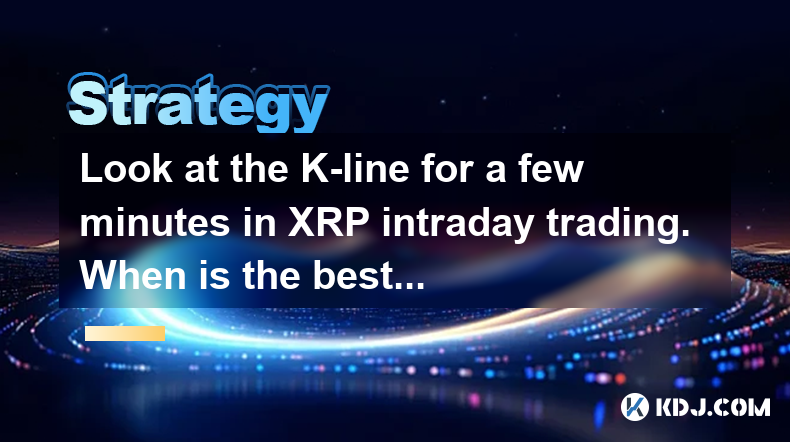
Understanding XRP Intraday Trading
Intraday trading in the cryptocurrency market, specifically with XRP, involves buying and selling the digital asset within the same trading day. The goal is to capitalize on short-term price movements. To succeed in this fast-paced environment, traders often rely on technical analysis, particularly the use of K-line charts. The K-line, or candlestick chart, provides a visual representation of price movements over a specific time frame, such as a few minutes.
Importance of K-Line Analysis
K-line analysis is crucial for intraday traders as it helps them identify trends, patterns, and potential reversal points. Each K-line represents a specific time period and shows the opening, closing, high, and low prices. By examining these lines over a few minutes, traders can gain insights into the market's momentum and volatility, which are essential for making informed trading decisions.
Identifying Key Trading Times
When looking at the K-line for a few minutes in XRP intraday trading, the best time to operate often depends on several factors, including market volatility, trading volume, and the presence of specific patterns. Generally, the most active trading periods occur during the overlap of major market sessions, such as when the Asian and European markets are open simultaneously.
Analyzing K-Line Patterns
To determine the best time to operate, traders should focus on recognizing K-line patterns that signal potential entry and exit points. Common patterns include doji, hammer, and engulfing patterns. For instance, a bullish engulfing pattern, where a larger green candle follows a smaller red candle, may indicate a potential upward movement, suggesting a good time to buy.
Steps to Analyze K-Line for a Few Minutes
When analyzing the K-line for a few minutes, follow these steps:
- Select the Time Frame: Choose a time frame that aligns with your trading strategy. For intraday trading, a 1-minute or 5-minute chart is often used.
- Observe the Trend: Look at the overall trend of the K-lines. Are they predominantly green (bullish) or red (bearish)?
- Identify Key Levels: Pay attention to support and resistance levels, which can be identified by horizontal lines where the price has historically bounced or stalled.
- Spot Patterns: Look for recognizable patterns such as doji, hammers, or engulfing patterns that may signal a potential reversal or continuation.
- Check Volume: Ensure that any identified pattern is accompanied by significant trading volume, as this can validate the pattern's reliability.
- Set Entry and Exit Points: Based on your analysis, determine the best points to enter and exit trades. This might involve setting stop-loss and take-profit orders to manage risk.
Using Technical Indicators
In addition to K-line patterns, technical indicators can enhance your analysis. Popular indicators for intraday trading include the Moving Average Convergence Divergence (MACD), Relative Strength Index (RSI), and Bollinger Bands. These tools can help confirm trends and potential reversal points identified through K-line analysis.
Practical Example of K-Line Analysis
Consider a scenario where you are monitoring the XRP/USD pair on a 5-minute chart. You notice a series of red K-lines indicating a bearish trend. Suddenly, a doji candle appears, suggesting indecision in the market. This is followed by a bullish engulfing pattern with high volume, signaling a potential reversal. Based on this analysis, you might decide to enter a long position, anticipating an upward movement in price.
Managing Risk in Intraday Trading
Risk management is paramount in intraday trading. Even with thorough K-line analysis, the market can be unpredictable. Always set stop-loss orders to limit potential losses and take-profit orders to secure gains. Additionally, never risk more than a small percentage of your trading capital on a single trade.
Real-Time Monitoring and Adaptation
Successful intraday trading with XRP requires real-time monitoring and the ability to adapt quickly. Market conditions can change rapidly, and what seemed like a good entry point a few minutes ago might no longer be valid. Stay vigilant and be prepared to adjust your strategy based on new information and K-line developments.
Frequently Asked Questions
Q: How can I improve my K-line analysis skills for XRP intraday trading?
A: To improve your K-line analysis skills, practice regularly on a demo account, study historical charts, and stay updated with market news that might affect XRP. Additionally, consider joining trading communities or forums where you can learn from experienced traders.
Q: What are the common mistakes to avoid when trading XRP intraday?
A: Common mistakes include overtrading, ignoring risk management, and letting emotions drive trading decisions. Always stick to your trading plan, use stop-loss orders, and avoid chasing losses.
Q: Can I use automated trading bots for XRP intraday trading based on K-line analysis?
A: Yes, automated trading bots can be programmed to execute trades based on K-line patterns and technical indicators. However, ensure that the bot is well-tested and that you understand its strategy and risk parameters before using it in live trading.
Q: How does the time of day affect XRP intraday trading?
A: The time of day can significantly impact trading volume and volatility. Typically, the most active periods for XRP trading occur during the overlap of major market sessions, such as when the Asian and European markets are open. This increased activity can lead to more trading opportunities but also higher risk.
Disclaimer:info@kdj.com
The information provided is not trading advice. kdj.com does not assume any responsibility for any investments made based on the information provided in this article. Cryptocurrencies are highly volatile and it is highly recommended that you invest with caution after thorough research!
If you believe that the content used on this website infringes your copyright, please contact us immediately (info@kdj.com) and we will delete it promptly.
- Bitcoin's Pattern Break: Are HODLers the Key to the Next Surge?
- 2025-07-04 18:50:12
- Bitcoin Price, Trump's Bill, and the $150K Dream: A NYC Take
- 2025-07-04 19:50:12
- Ethereum, LILPEPE, and the July Bounce: Will Pepe Steal ETH's Thunder?
- 2025-07-04 19:10:12
- Binance Institutional Loans: Unlocking 4x Leverage and Zero Interest for Whales
- 2025-07-04 19:15:12
- Bitcoin Bull Run: Analysts Eye Peak in Late 2025?
- 2025-07-04 19:20:13
- Pepe Indicators, Bullish Forecast: Can the Meme Coin Rally?
- 2025-07-04 19:25:12
Related knowledge
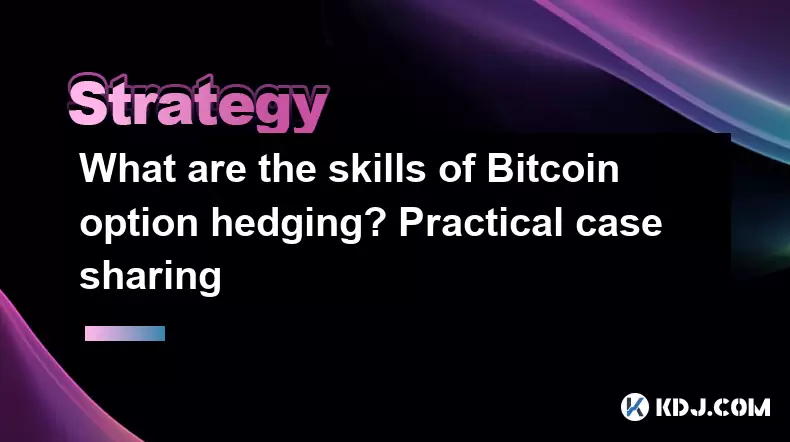
What are the skills of Bitcoin option hedging? Practical case sharing
Jun 24,2025 at 04:01pm
Understanding Bitcoin Option HedgingBitcoin option hedging is a risk management strategy used by traders and investors to protect their positions in the volatile cryptocurrency market. By using options, individuals can limit potential losses while retaining the opportunity for profit. In essence, it allows one to insulate against adverse price movements...
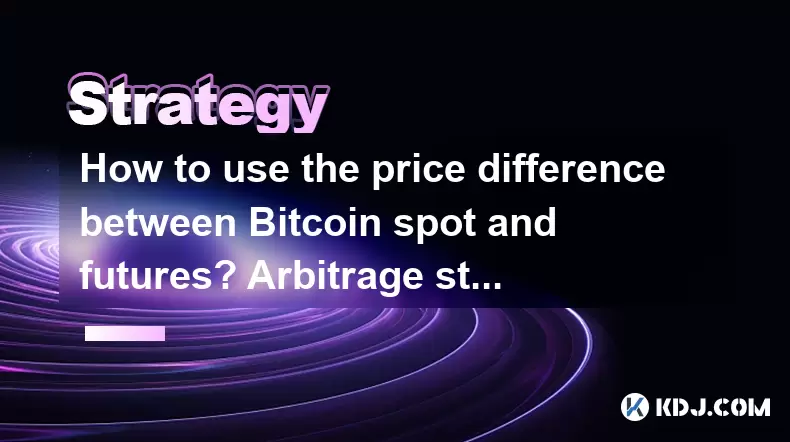
How to use the price difference between Bitcoin spot and futures? Arbitrage strategy
Jun 20,2025 at 02:56pm
Understanding Bitcoin Spot and Futures MarketsTo effectively leverage arbitrage opportunities between Bitcoin spot and futures markets, it's essential to understand the fundamental differences between these two types of markets. The spot market refers to the direct buying and selling of Bitcoin for immediate delivery at the current market price. In cont...

How to increase DeFi lending income? Strategy and risk analysis
Jun 24,2025 at 02:08pm
Understanding DeFi Lending and Its Income PotentialDeFi (Decentralized Finance) lending has emerged as a popular way to earn passive income in the cryptocurrency space. Unlike traditional banking systems, DeFi lending platforms allow users to lend their crypto assets directly to borrowers without intermediaries. The lenders earn interest based on the su...
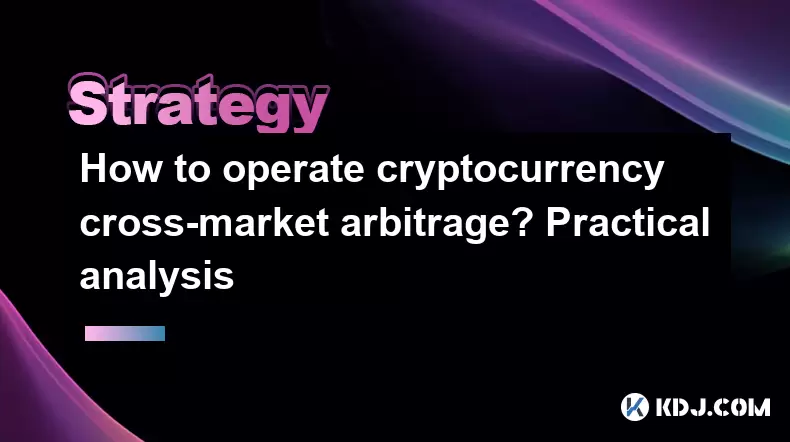
How to operate cryptocurrency cross-market arbitrage? Practical analysis
Jun 23,2025 at 04:01am
Understanding Cryptocurrency Cross-Market ArbitrageCryptocurrency cross-market arbitrage involves taking advantage of price differences for the same digital asset across different exchanges. The core idea is to buy low on one exchange and sell high on another, capturing the profit from the discrepancy. This strategy relies heavily on real-time market da...

How to make profits from high-frequency cryptocurrency trading? Sharing core skills
Jun 19,2025 at 05:07pm
Understanding High-Frequency Cryptocurrency TradingHigh-frequency trading (HFT) in the cryptocurrency market involves executing a large number of trades at extremely fast speeds, often within milliseconds. This method relies on small price discrepancies across exchanges or within a single exchange’s order book. Traders use complex algorithms and ultra-l...
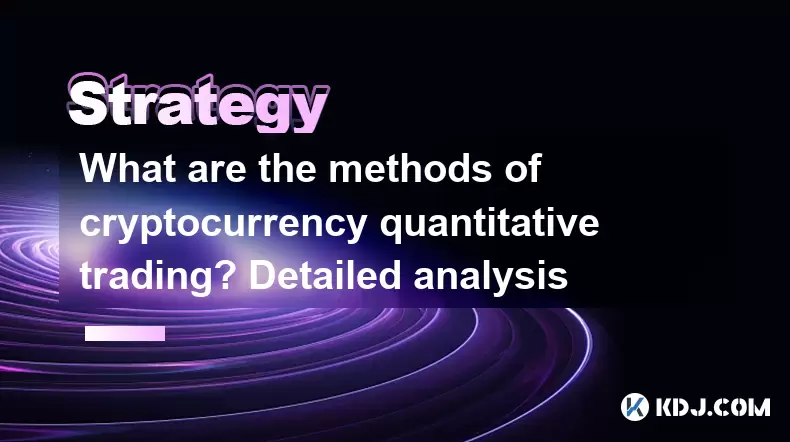
What are the methods of cryptocurrency quantitative trading? Detailed analysis
Jun 22,2025 at 11:07pm
Understanding the Core of Cryptocurrency Quantitative TradingCryptocurrency quantitative trading refers to the use of mathematical models and algorithms to execute trades in the digital asset market. Unlike traditional discretionary trading, which relies heavily on human judgment, quantitative trading leverages data-driven strategies to identify profita...

What are the skills of Bitcoin option hedging? Practical case sharing
Jun 24,2025 at 04:01pm
Understanding Bitcoin Option HedgingBitcoin option hedging is a risk management strategy used by traders and investors to protect their positions in the volatile cryptocurrency market. By using options, individuals can limit potential losses while retaining the opportunity for profit. In essence, it allows one to insulate against adverse price movements...

How to use the price difference between Bitcoin spot and futures? Arbitrage strategy
Jun 20,2025 at 02:56pm
Understanding Bitcoin Spot and Futures MarketsTo effectively leverage arbitrage opportunities between Bitcoin spot and futures markets, it's essential to understand the fundamental differences between these two types of markets. The spot market refers to the direct buying and selling of Bitcoin for immediate delivery at the current market price. In cont...

How to increase DeFi lending income? Strategy and risk analysis
Jun 24,2025 at 02:08pm
Understanding DeFi Lending and Its Income PotentialDeFi (Decentralized Finance) lending has emerged as a popular way to earn passive income in the cryptocurrency space. Unlike traditional banking systems, DeFi lending platforms allow users to lend their crypto assets directly to borrowers without intermediaries. The lenders earn interest based on the su...

How to operate cryptocurrency cross-market arbitrage? Practical analysis
Jun 23,2025 at 04:01am
Understanding Cryptocurrency Cross-Market ArbitrageCryptocurrency cross-market arbitrage involves taking advantage of price differences for the same digital asset across different exchanges. The core idea is to buy low on one exchange and sell high on another, capturing the profit from the discrepancy. This strategy relies heavily on real-time market da...

How to make profits from high-frequency cryptocurrency trading? Sharing core skills
Jun 19,2025 at 05:07pm
Understanding High-Frequency Cryptocurrency TradingHigh-frequency trading (HFT) in the cryptocurrency market involves executing a large number of trades at extremely fast speeds, often within milliseconds. This method relies on small price discrepancies across exchanges or within a single exchange’s order book. Traders use complex algorithms and ultra-l...

What are the methods of cryptocurrency quantitative trading? Detailed analysis
Jun 22,2025 at 11:07pm
Understanding the Core of Cryptocurrency Quantitative TradingCryptocurrency quantitative trading refers to the use of mathematical models and algorithms to execute trades in the digital asset market. Unlike traditional discretionary trading, which relies heavily on human judgment, quantitative trading leverages data-driven strategies to identify profita...
See all articles

























































































